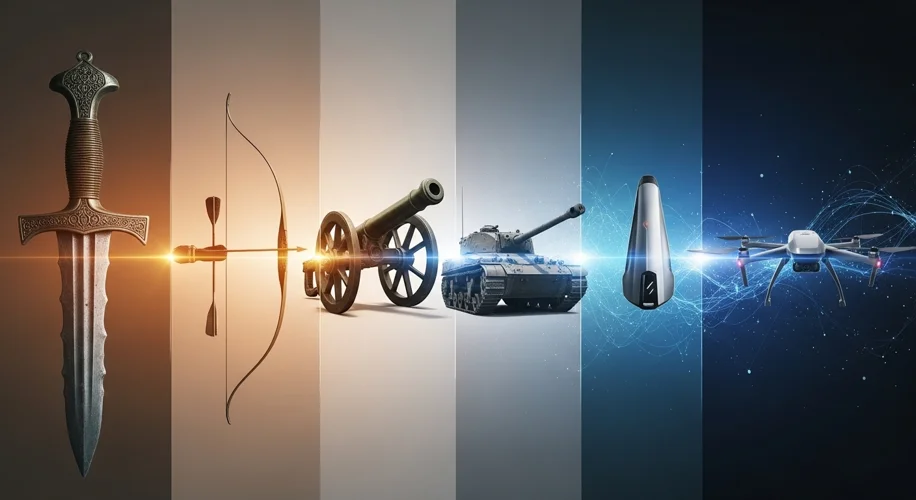In markets, innovation drives everything. It shifts power, creates new opportunities, and renders old strategies obsolete. The same principle applies, perhaps even more brutally, to warfare. For centuries, the side with a technological edge often dictates the terms of engagement. Understanding this evolution isn’t just a history lesson; it’s a study in disruption, a force that reshapes nations and global power structures.
Think back to ancient times. Bronze swords replaced stone axes. A bronze weapon offered sharper edges, better durability. Then came iron. Cheaper to produce, more plentiful. This wasn’t just about a better weapon; it democratized warfare, allowing larger armies to be equipped. The impact was clear: societies that mastered metallurgy gained significant strategic advantages. It’s an early example of material science changing the game.
Centuries later, gunpowder arrived. Suddenly, castle walls designed for bows and arrows were vulnerable. Infantry could engage cavalry from a distance. The shift was profound. It wasn’t just about a new projectile; it forced new military formations, new logistics, and required industrial capacity to produce ammunition. This was a capital-intensive shift, favoring larger, more organized states.
The Industrial Revolution accelerated this. Mass production meant standardized rifles, machine guns, and artillery. Logistics became paramount, moving vast amounts of materiel. World War I saw this play out: trenches, defensive lines, and the horrifying efficiency of rapid-fire weapons. Technology moved from individual tools to systemic capabilities. It pushed the scale of conflict to an unprecedented level, demanding national mobilization of resources.
Then came the 20th century, a period of exponential leaps. Air power, tanks, radar, and eventually, nuclear weapons. Each introduced entirely new dimensions to conflict. Airplanes turned the battlefield into a 3D space. Tanks brought mobility and shock. Nuclear weapons fundamentally changed grand strategy, introducing the concept of mutually assured destruction. The investment required for these technologies was immense, often driving national scientific and industrial policy.
Today, we’re in another rapid phase. Precision-guided munitions, drones, cyber warfare, and the nascent integration of AI are reshaping the landscape. Drones offer reconnaissance, strike capabilities, and even logistical support, often at a fraction of the cost and risk of manned aircraft. Cyber warfare targets critical infrastructure, financial systems, and information networks, operating without a visible battlefield. AI promises to accelerate decision-making and optimize resource deployment. This isn’t just about bigger bombs; it’s about information asymmetry, speed of execution, and the ability to project power non-physically.
What does this tell us? Technology is never static. The advantage gained from a new weapon or tactic is often fleeting as others adapt or innovate. It’s a relentless cycle of development, deployment, and counter-development. For any observer, whether in markets or geopolitics, understanding these technological vectors is key. They define the future landscape, just as much as economic policy or market trends. The underlying driver is always innovation, and its impact is always disruptive.

